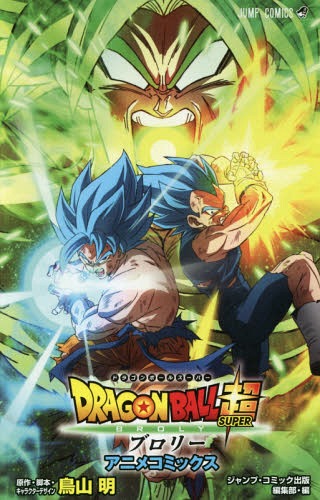
Broly holds a rather peculiar place in Dragon Ball's history. Despite proving popular enough to warrant a leading role in four separate movies spread across two and a half decades, the Legendary Super Saiyan only earned his official canon debut towards the end of 2018. For all intents and purposes, Broly's story has barely begun, yet, the character is an icon of Akira Toriyama's franchise and, by extension, the anime industry.
Dragon Ball Super: Broly left quite a splash and redeems the eponymous Saiyan following the dismal Second Coming and Bio-Broly films. Technically, the current version of Broly holds no relation to 1990’s variant, but a lot of overlap exists between the two. Is the newer model an improvement?
For the sake of convenience, the original and recent versions will be called Broly Z and Broly S respectively.
The Birth of a Legendary Super Saiyan
The Legendary Super Saiyan and Dragon Ball Super: Broly present origin stories for the perpetually enraged warrior, with the latter retaining many of the plot points explored by the former. In both cases, Broly is born with an incredibly high power level that causes King Vegeta to dread the baby's potential. Consequently, the Saiyan race's fearless leader orders the infant's elimination, although Dragon Ball Super opts for indirect infanticide by banishing the child to a desolate planet filled with dangerous monsters. In both versions, Broly is pursued by his father Paragus, who becomes obsessed with taking revenge on the King and his little Vegeta too.
Broly's overwhelming power causes the Saiyan to lose control, prompting Paragus to construct a fail-safe to keep his son in check. Once Broly becomes older, Paragus sets out to use his son as a tool for exacting revenge on Vegeta. Both cases show Broly losing control before transforming into a Super Saiyan and nearly destroying the Z fighters, although the triggers behind these transformations are quite different.
On the surface, it may seem like Broly is a mindless uncontrollable wall of muscles regardless of the iteration, however, Dragon Ball Super adds a touch of nuance sorely lacking in 1993's original film.
Becoming Legendary
In a genuinely baffling move, the Legendary Super Saiyan bestows Broly Z with a satisfactory backstory before proceeding to undermine its own accomplishments by choosing a profoundly idiotic trigger to provoke the villain into losing control. As a child, Broly shared a nursery with a crying Goku, who quickly gets on the former's nerves. Once Goku's Saiyan name is revealed, Broly experiences a PTSD episode and completely goes insane. Due to the transformation happening so suddenly and because of so little, Broly comes across as a mindless monster. The character never struggles with his own uncontrollable power.
Conversely, Dragon Ball Super spreads Broly's transformation over an extended period lasting around 20 minutes. Rather than a mind-control device, Paragus employs a shock collar to calm Broly when things get out of hand. After the pair are picked up by two Frieza Force members, Cheelai and Lemo, Paragus activates the collar to prevent Broly from killing a thug during a brief altercation on the ship. Disgusted by the act, Cheelai steals the collar’s remote; consequently, Paragus cannot calm Broly down once the tide begins to turn against Vegeta and Goku.
While Broly Z seems to be waiting for any excuse to go nuclear, Broly S's descent into madness is gradual and tragic. Outside of the fights, 2018's flick allows the Saiyan to be himself rather than a drone controlled by his father. Broly is conflicted. He hates his dad's actions but does not react kindly to Cheelai and Lemo badmouthing Paragus. He searches for companionship, even if the only option is a deadly worm monster. Although not afraid to utilize his strength, Broly does not crave power.
Protagonist vs. Antagonist
Broly Z is framed as a villain. Broly’s goal is to destroy Goku, with little else motivating the Saiyan. Conversely, Broly S is the protagonist. Broly has desires besides destroying Goku and Vegeta; in fact, Paragus is far more preoccupied with revenge than his son.
A character’s motives are typically split into wants and needs, with the former being the tangible goal and the latter revolving around personal growth. While Dragon Ball Z indicates Broly wants to break free from his father’s control, this element does not receive enough time to amount to anything. Broly Z is solely about his want.
Broly S is driven by a need to attain autonomy from Paragus, foster a genuine connection with another person, and to learn how to control his power. Out of all the characters in Dragon Ball Super’s movie, Broly goes through the most changes. While his arc is somewhat hurt by Cheelai and Lemo executing most of the choices for him, Broly ends up in a completely different place. Broly Z proves King Vegeta’s fears to be justified, while Broly S strives to subvert expectations.
Final Thoughts

Broly Z is written to serve as an obstacle. There is no attempt to provide a satisfying conclusion to his arc, as he exists merely to be defeated by Goku. On the other hand, Broly S is principally a neutral character forced into an antagonistic role by outside forces. Consequently, the latter is sympathetic and a more rounded character. While Broly Z seems to relish his time as a Super Saiyan, Broly S experiences his lowest point after transforming.
Recommended Post

